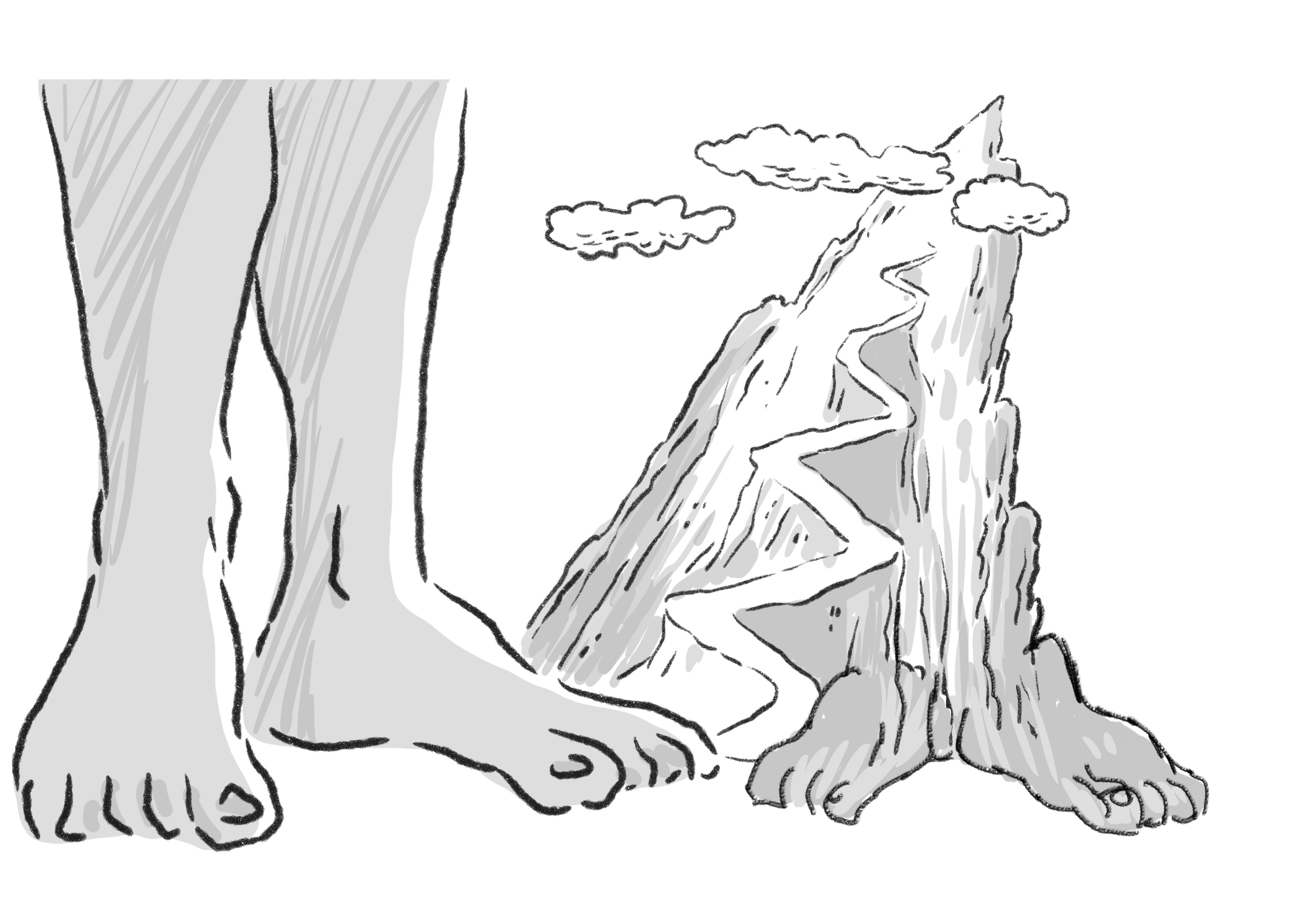monte
[ˈmuŋte]
monte
N + Adj/AdjP (or Adj + N)
| Genoese | Italian |
|---|---|
|
monte erto
[ˈmuŋte ˈɛːrtu] |
monte alto
|
|
monte sacro
[ˈmuŋte ˈsaːkru] |
monte sacro
|
N + Prep + N (monte)
| Genoese | Italian |
|---|---|
|
cadeña de monti
[kaˈdeŋˑa de ˈmuŋti] |
catena di monti
|
|
çimma do monte
[ˈsimˑa du ˈmuŋte] |
cima del monte
|
|
coroña de monti
[kuˈruŋˑa de ˈmuŋti] |
corona di monti
|
|
còste do monte
[ˈkɔsta du ˈmuŋte] |
coste del monte
|
|
pê do monte
[ˈpeː du ˈmuŋte] |
piedi del monte
|
N (Subj) + V (or V + N (predicative complement of the subject))
| Genoese | Italian |
|---|---|
|
o monte o dòmina qcs.
[u ˈmuŋtɔu̯ ˈdɔmina kwarˈkɔːsa] |
il monte domina qcs.
|
V + N (DirObj or its predicative complement)
| Genoese | Italian |
|---|---|
|
scalâ un monte
[skaˈla ŋ ˈmuŋte] |
scalare un monte
|
|
scompassâ un monte
[skuŋpaˈsˑa ŋ ˈmuŋte] |
valicare un monte
|
V + N (IndirObj or its predicative complement, or else agent complement)
| Genoese | Italian |
|---|---|
|
arrampinâse in sce un monte
[araŋpiˈnaːse ŋ ʃe ŋ ˈmuŋte] |
arrampicarsi su un monte
|
|
montâ in sce un monte
[muŋˈta ŋ ʃe ŋ ˈmuŋte] |
salire su un monte
|
N + PrepP
| Genoese | Italian |
|---|---|
|
monte de pietæ
[ˈmuŋte de pje(ː)ˈtɛː] |
monte di pietà
(= ‘istituto dove si prendevano soldi a prestito’)
|
monte as (part of an) IndirObj (including subordinate clauses)
| Genoese | Italian |
|---|---|
|
anâ à monte
[aˈnaː (a) ˈmuŋte] |
andare a monte [rif. a partita]
(= ‘essere annullata’)
|
|
mandâ qcs. à monte
[maŋˈdaː kwarˈkɔːsaː ˈmuŋte] |
mandare qcs. a monte [rif. a partita]
(= ‘annullarla’)
|

«pê do monte»
[ZE] In primmo cian, pe rende o scignificato letteale da combinaçion, doî pê umen nui vëgnan disegnæ arrembæ in sciâ tæra, a-a base de un grande monte (à seu vòtta co-i pê) ch’o se erze maistoso in sciô fondo. Pe indicâ o scignificato fraseològico, i pê vëgnan södamente poxiçionæ a-a base, tòsto à rappresentâ o ponto de comenso do cammin verso a çimma.
[IT] In primo piano, per rendere il significato letterale della combinazione, due piedi umani nudi vengono disegnati appoggiati sulla terra, alla base di un grande monte (a sua volta coi piedi) che si erge maestoso sullo sfondo. Per indicare il significato fraseologico, i piedi vengono solidamente posizionati alla base, quasi a rappresentare il punto d'inizio del cammino verso la vetta.
[EN] In the foreground, to convey the literal meaning of the combination (Engl. “foot of the mountain”), two bare human feet are drawn resting on the ground at the base of a large mountain (which also has feet) rising majestically in the background. To indicate the figurative meaning, the feet are firmly positioned at the base, almost as if representing the starting point of the journey towards the summit.
[DE] Um die wörtliche Bedeutung der Kombination zu verdeutlichen (dt. „Fuße des Berges“), sind im Vordergrund zwei nackte menschliche Füße zu sehen, die auf dem Boden stehen, am Fuße eines großen Berges (der ebenfalls Füße hat), der sich majestätisch im Hintergrund erhebt. Um die phraseologische Bedeutung zu verdeutlichen, stehen die Füße fest auf dem Boden, fast so, als würden sie den Ausgangspunkt des Weges zum Gipfel darstellen.
[ZE] In primmo cian, pe rende o scignificato letteale da combinaçion, doî pê umen nui vëgnan disegnæ arrembæ in sciâ tæra, a-a base de un grande monte (à seu vòtta co-i pê) ch’o se erze maistoso in sciô fondo. Pe indicâ o scignificato fraseològico, i pê vëgnan södamente poxiçionæ a-a base, tòsto à rappresentâ o ponto de comenso do cammin verso a çimma.
[IT] In primo piano, per rendere il significato letterale della combinazione, due piedi umani nudi vengono disegnati appoggiati sulla terra, alla base di un grande monte (a sua volta coi piedi) che si erge maestoso sullo sfondo. Per indicare il significato fraseologico, i piedi vengono solidamente posizionati alla base, quasi a rappresentare il punto d'inizio del cammino verso la vetta.
[EN] In the foreground, to convey the literal meaning of the combination (Engl. “foot of the mountain”), two bare human feet are drawn resting on the ground at the base of a large mountain (which also has feet) rising majestically in the background. To indicate the figurative meaning, the feet are firmly positioned at the base, almost as if representing the starting point of the journey towards the summit.
[DE] Um die wörtliche Bedeutung der Kombination zu verdeutlichen (dt. „Fuße des Berges“), sind im Vordergrund zwei nackte menschliche Füße zu sehen, die auf dem Boden stehen, am Fuße eines großen Berges (der ebenfalls Füße hat), der sich majestätisch im Hintergrund erhebt. Um die phraseologische Bedeutung zu verdeutlichen, stehen die Füße fest auf dem Boden, fast so, als würden sie den Ausgangspunkt des Weges zum Gipfel darstellen.